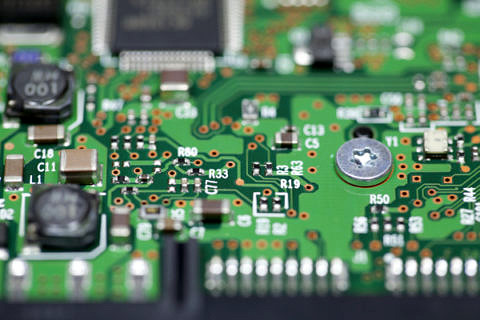Strengthening nanotechnology for Europe

FAU involved in multinational EU project focused on promoting young researchers
Nanotechnology is a 21st century technology. It allows products of just a few nanometres in size to be produced in any shape desired: for microprocessors, for electronic circuits in computers and in telecommunications, and for applications in medicine and biotechnology, to name just a few of the areas where it can be used. The economic potential of nanotechnology is increasing rapidly. In light of this, the European Commission is funding the Marie Curie Training Network ELENA (Low energy ELEctron driven chemistry for the advantage of emerging NAnofabrication methods), which involves 13 universities, 4 research institutes and 5 companies from 13 European countries. ELENA’s aim is to train a new generation of European researchers in the field of nanotechnology who will provide innovative ideas for new research and economic uses to ensure Europe can maintain a competitive edge.
One of the researchers involved in ELENA, which is led by Professor Oddur Ingólfsson from Iceland, is PD Dr. Hubertus Marbach from the Chair of Physical Chemistry II at Friedrich-Alexander-Universität Erlangen-Nürnberg (FAU). Other partners include the universities of Bielefeld and Bremen. All three universities previously worked closely together on the earlier project CELINA (Chemistry for ELectron-Induced NAnofabrication), which was formed within the European network COST Actions.
The main focus of ELENA is on training 15 doctoral candidates from various different countries for careers in nanotechnology. Through measures such as extensive stays abroad spent working with the project partners in industry and research, ELENA’s International Training Network (ITN) aims to provide them with the best possible preparation to deal with challenges in the industry. FAU researcher Hubertus Marbach has various roles in the ITN, including as head of the working group ‘Nano-scale fabrication with FEBIP and EUVL’ and as a member of the steering committee.
New chemistry for nanotechnology
The European Union is providing ELENA with four million euros of funding for the next four years. The project will concentrate on two cutting-edge procedures in nanotechnology which only work in conjunction with the right chemistry. One of these is electron beam induced deposition (EBID), in which structures are written onto a surface by decomposing molecules under an electron beam, leaving deposits on the surface. To create nanostructures made from a specific material using EBID, specific molecules are required which include the atoms of the material but are also easy to vaporise to enable the writing process to take place. Unfortunately the decomposition of the molecules that have previously been used in EBID is usually incomplete. For this reason, new molecules need to be specially developed which allow nanostructures to be created not only in the desired form but also with the desired purity and precisely adjustable physical properties.
The team of FAU researchers led by PD Dr. Hubertus Marbach are working on novel electron beam lithography procedures which were developed in recent years with contributions from researchers in Erlangen. Working in an ultra-high vacuum (UHV) chamber allows them to produce pure metallic deposits from metal-organic molecules. ‘One of the goals of ELENA will be to adapt the relevant new UHV-based procedures for standard high-vacuum devices, allowing possible applications in industry to be developed further,’ Hubertus Marbach explains.
The second procedure is extreme ultraviolet lithography (EUVL). EUVL also deposits extremely fine structures onto a surface. However, in this case the deposited material, known as photoresist, is exposed to extremely high-energy UV light through stencils, which changes its chemical composition. EUVL also requires materials which are specially adapted to the procedure, in this case photoresists, which change precisely and efficiently into the desired structures when exposed to UV light. Designing new molecules for EBID and developing new, more efficient photoresists for EUVL will also be key focuses of the research.
Further information:
PD Dr. Hubertus Marbach
Phone: +49 9131 8527316
hubertus.marbach@fau.de